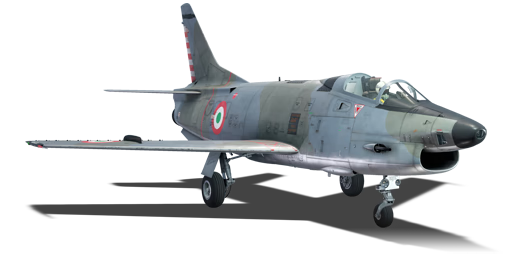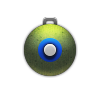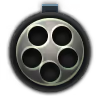



The G.91 YS was based in the earlier G.91 Y, which was a complete redesign of the G.91 series of aircraft, going from a small and light airframe to a heavier and more capable one, with two afterburning engines, a longer range, and a bigger payload for ground attack missions. The G.91 YS was a version of this fighter developed for Switzerland, the main difference was slightly modified avionics and the addition of more modern loadouts, such as AIM-9 Sidewinders. Though the country was interested in acquiring the G.91, the purchase was never completed.
It was introduced in Update 1.87 "Locked On". In similar fashion to the French Super Mystere B2, the G.91 YS was outfitted with dual 30 mm DEFA autocannons in the cheeks of the forward fuselage. Also in the same vein, the G.91 YS was built to be a multi-role fighter as a fighter-interceptor or a fighter-bomber. Due to the increased power of the dual engines, this fighter when acting in a bomber role has the ability to carry up to 4,000 lbs of bombs, though configurations as low as 1,000 lbs is available. FFAR Mighty Mouse unguided rockets are another good option for taking out softer ground targets, since they have the potential to destroy a higher number of enemies in the hands of a skilled pilot. For air combat, the G.91 YS lacks countermeasures but compensates this with a very good flight performance, however it has a mediocre top speed, in a BR when most fighters are already supersonic; keep your speed high at all times or else you might become vulnerable to missiles and fast interceptors like the MiG-21s and F-104s that start to be very common.
flaps
flaps
flaps
brake
| Belt | Belt filling | Armor penetration (mm) at a distance: | |||||
|---|---|---|---|---|---|---|---|
| 10 m | 100 m | 500 m | 1000 m | 1500 m | 2000 m | ||
| API-T/HEI/HEF | 35 | 32 | 21 | 13 | 8 | 5 | |
| HEI/API-T/API-T/API-T | 35 | 32 | 21 | 13 | 8 | 5 | |
| HEF/HEI/HEF/HEI/API-T | 35 | 32 | 21 | 13 | 8 | 5 | |
| HEF/HEI | 4 | 4 | 3 | 3 | 3 | 3 | |
| Name | Weight | Slot | ||||||
|---|---|---|---|---|---|---|---|---|
| 72.6 kg |  |  | ||||||
| 240.9 kg |  |  | ||||||
| 254 kg |  |  | ||||||
| 446.8 kg |  |  | ||||||
| 19 × | 233.7 kg |  |  |  |  | |||
| 4 × | 280.3 kg |  |  |  |  | |||
| 240.9 kg |  |  | ||||||
| 254 kg |  |  | ||||||
| 446.8 kg |  |  | ||||||
| 253 kg |  |  | ||||||












Flight performance | |
|---|---|
Survivability |
|---|
Weaponry | ||
|---|---|---|